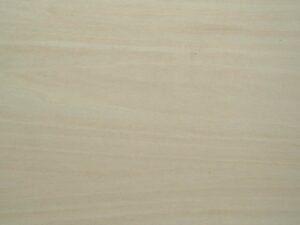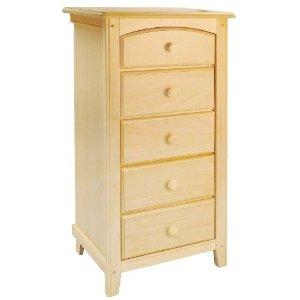
American Basswood is a deciduous tree that grows throughout the Northeastern half of North America. It is also sometimes referred to as American Linden.
This hardwood is highly resistant to warping and has good gluing capabilities, making it a popular choice for furniture. Like ash, basswood is odor and taste-free; it is often used to create baskets, bowls, and other food-storage receptacles.
Solid basswood is a favorite among whittlers; it is very easy to work, making it a great choice for creating appliqués, moldings, or turned pieces for furniture. It has a tendency to become fuzzy when sanded. If you’re refinishing an old piece that needs some smoothing, try applying sanding sealer after stripping. This stabilizer should allow you to smooth away and create a perfect finish. Before sanding too deeply, make sure the piece is solid wood. Basswood veneer is often used as the top layer of plywood; it’s important to leave it thick enough that the under layers won’t show through.
 Basswood is very light, ranging from white to pale tan in color and has an even, tight, and almost imperceptible grain pattern. The wood is softer and more porous than most hardwoods, so it tends to absorb stain unevenly, creating unattractive splotches. This can be avoided by using a coat or two of pre-stain conditioner.
Basswood is very light, ranging from white to pale tan in color and has an even, tight, and almost imperceptible grain pattern. The wood is softer and more porous than most hardwoods, so it tends to absorb stain unevenly, creating unattractive splotches. This can be avoided by using a coat or two of pre-stain conditioner.
Aniline dyes are available in a wide variety of vibrant colors. If you prefer exciting colored pieces instead of ho-hum wood tones, basswood is a good substrate. Its pale color and barely visible grain won’t bleed through the dye or alter its color. You may also want to consider using a gel-based stain; these viscous products make applying a smooth, even coat much easier.
Another finishing option is to decorate your basswood furniture with paint. This is the perfect opportunity to try a decorative faux finish or play with striping, tole painting, or even gilding. Make sure you use a high quality primer on the piece before painting; the same porosity that makes staining linden a pain will also cause it to absorb any paint you apply.

